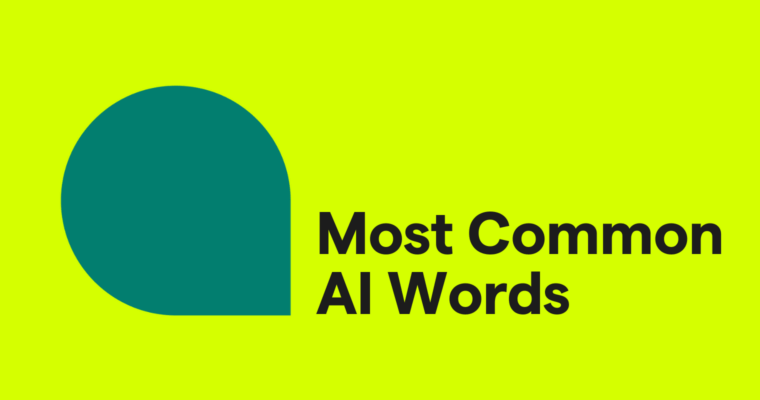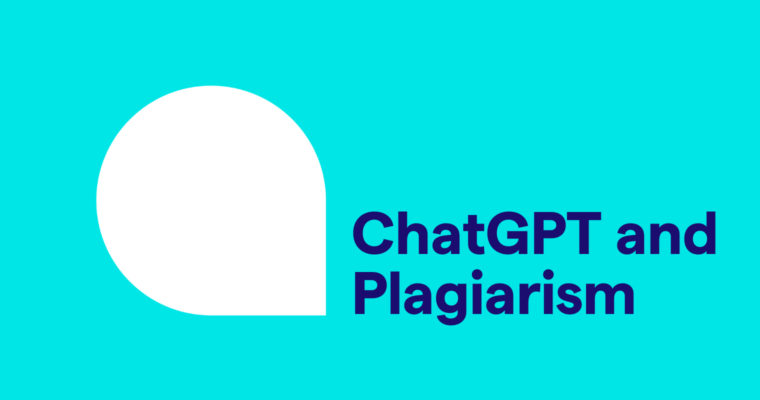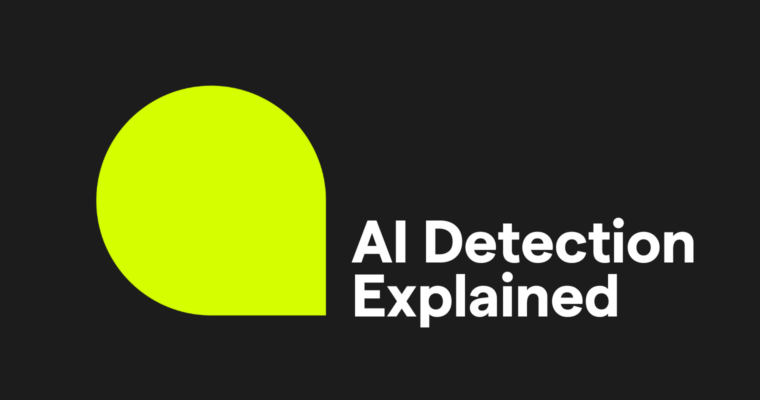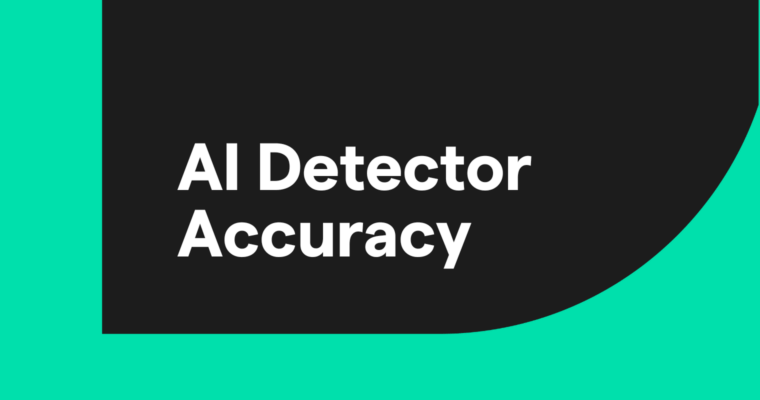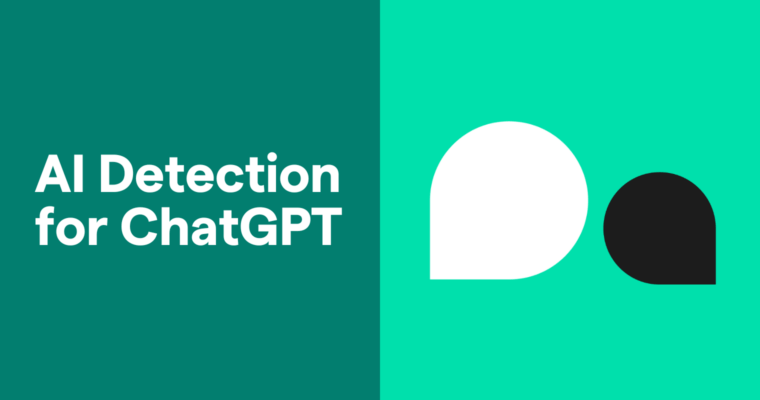
Artificial intelligence (AI) is everywhere. Excitement, fear, and speculation about its future dominate headlines, and many of us already use AI for personal and work tasks.
Of course, it’s generative artificial intelligence that people are talking about when they refer to the latest AI tools. Innovations in generative AI make it possible for a machine to quickly create an essay, a song, or an original piece of art based on a simple human query.
So, what is generative AI? How does it work? And most importantly, how can it help you in your personal and professional endeavors?
This guide takes a deep dive into the world of generative AI. We cover different generative AI models, common and useful AI tools, use cases, and the advantages and limitations of current AI tools. Finally, we consider the future of generative AI, where the technology is headed, and the importance of responsible AI innovation.
Table of contents
Training, tuning, and improving
What are generative AI models?
Generative AI use cases and applications
Advantages and benefits of generative AI
Disadvantages and limitations of generative AI
What is generative AI?
Generative AI is a branch of AI that focuses on producing new content, such as text, images, or audio. It achieves this by analyzing a vast number of existing examples, allowing the system to learn patterns and generate original outputs based on that knowledge.
Unlike traditional AI approaches, which often rely on predefined rules and specific programming for each task, generative AI leverages foundational models. These are large-scale AI models trained on diverse and extensive datasets, making them highly adaptable. For instance, models like ChatGPT are built on these foundational models, enabling them to perform a wide range of tasks, including content creation, creative writing, and problem-solving.
AI is essential in generative AI because it enables models to learn and evolve without needing explicit instructions for every specific task. This adaptability allows generative AI systems to handle various applications seamlessly.
For example, a generative AI model could craft a formal business email. By learning from millions of examples, the AI understands email structure, formal tone, and business language. It then generates a new email by predicting the most likely sequence of words that matches the desired style and purpose.
Training, tuning, and improving
Training makes or breaks a generative AI model’s performance. In fact, there usually isn’t just one training phase—there are three:
- Pre-training
- Supervised fine-tuning
- Reinforcement learning from human feedback
Pre-training
The pre-training phase consists of giving billions or trillions of examples to the model and letting it pick up on patterns in the data. Before pre-training, the generative AI model doesn’t know how to do any task. If you gave it a prompt, it would return gibberish. After pre-training, the model will be able to do a huge range of tasks at a basic level. For example, it would be able to draft an easy project update email.
The size and quality of the training dataset are the key factors here. A small, high-quality dataset would teach the model a few tasks really well, but then the model wouldn’t be able to do any other tasks. A model trained on a big, low-quality dataset would be able to do many tasks, but it would perform poorly.
Supervised fine-tuning
Supervised fine-tuning is a process that improves the performance of the model on a specific task. It consists of giving the model tasks along with example responses to learn from. Researchers use this process to improve a model’s programming performance. The model takes in an example of a programming problem along with examples of good code that solves the problem. It then learns the patterns in the good code and can use those patterns in other programming tasks. This process can be repeated for many tasks to improve performance. All that’s needed is examples of good outputs (which can be expensive to create since they require experts).
Reinforcement learning from human feedback (RLHF)
RLHF is the last training process for a model. RLHF trains the generative AI model to return useful and safe outputs by using another AI model that emulates human preferences. Ultimately, we want the generative AI model to return outputs that align with what humans want. However, getting humans to review every single output of the model would be impossible. Instead, researchers get humans to rate a subset of the model’s outputs. Then, they use this dataset to train an AI model that takes in a prompt and the gen AI model’s responses and returns a score for each response. Then, they fine-tune the gen AI model’s responses using this scoring model. Since a model now does the scoring, it can be done in parallel and at scale. The post-RLHF generative AI model is safer and more useful with its outputs.
How generative AI works
To best understand how generative AI works, let’s break down its operations into simple steps.
Step 1. A user enters a prompt
Generative AI responds to prompts entered by humans. For example, someone might enter a prompt such as “Write a cover letter for a job application.” The more specific and well-written the prompt, the more likely the model is to produce a satisfactory output. You might hear the term prompt engineering, which refers to the process of tweaking a prompt’s phrasing or including additional instructions to get higher-quality, more accurate results from a generative AI tool.
Prompts aren’t always provided as text. Depending on the type of generative AI system (more on those later in this guide), a prompt may be provided as an image, a video, or some other type of media.
Step 2. The generative AI tool analyzes the prompt
Next, the generative AI model analyzes the prompt, turning it from a human-readable format into a machine-readable one. Sticking with text for the purposes of this example, the model would use natural language processing (NLP) to encode the instructions in the prompt.
This starts with splitting longer chunks of text into smaller units called tokens, which represent words or parts of words. The model analyzes those tokens from the standpoint of grammar, sentence structure, and many other kinds of complex patterns and associations that it’s learned from its training data. This might even include prompts you’ve given the model before, since many generative AI tools can retain context over a longer conversation.
Step 3. The tool generates a predictive output
Using everything that the model has encoded about the prompt, it tries to generate the most reasonable, statistically likely response. In essence, the model asks itself, “Based on everything I know about the world so far and given this new input, what comes next?”
For example, imagine you’re reading a story, and when you get to the end of the page, it says, “My mother answered the,” with the next word being on the following page. When you turn the page, what do you think the next word is going to be? Based on what you know about the world in general, you might have a few guesses. It could be phone, but it could also be text, call, door, or question. Knowing about what came before this in the story might help you make a more informed guess, too.
In essence, this is what a generative AI tool like ChatGPT is doing with your prompt, which is why more specific, detailed prompts help it make better outputs. It has the start of a scenario, like “Write a funny story about a dog.” Then it tries to complete the story word by word, using its complex model of the world and the relationships in it. Crucially, generative AI tools also go through reinforcement learning with human feedback to learn to prefer responses that humans will approve of.
If you’ve played around with generative AI tools, you’ll notice that you get a different output every time—even if you ask the same question twice, the tool will respond in a slightly different way. At a very high level, the reason for this is that some amount of randomness is key to making the responses from generative AI realistic. If a tool always picks the most likely prediction at every turn, it will often end up with an output that doesn’t make sense.
What are generative AI models?
Generative AI models are advanced machine learning (ML) systems designed to create new data that mimic patterns found in existing datasets. These models learn from vast amounts of data to generate text, images, music, or even videos that appear original but are based on patterns they’ve seen before.
Here are some common models used in generative AI:
Large language models (LLMs)
LLMs are an application of ML, a type of AI that can learn from and make decisions based on data. These models use deep learning techniques to understand context, nuance, and semantics in human language. LLMs are considered “large” due to their complex architecture, with some models having hundreds of billions of parameters and requiring hundreds of gigabytes to operate. These powerful models are highly skilled in language translation, creative content generation, human-like conversations, and summarizing long documents.
Transformer models
Transformer models are the core architecture that makes LLMs so powerful. Transformers introduced a new mechanism called attention, revolutionizing NLP. Unlike models that process input in sequence, the attention mechanism allows transformers to analyze relationships between all words in a sentence at once. This mechanism means that transformers can more easily capture context, leading to higher-quality language generation than models using sequential processing.
Foundational models
Foundational models are large-scale systems that are trained on huge amounts of varied data and that can be adapted to many different tasks. This broad category of models forms the foundation for many of today’s AI systems, such as LLMs. While LLMs are specific to natural language generation, other types of foundational models can work with audio, images, or multiple data types. For example, DALL-E can work with text and images simultaneously, and vision transformers (ViT) can analyze and generate images.
Diffusion models
In a diffusion model, Gaussian noise is gradually added to training data, creating increasingly noisy (or grainy) versions. The noise is “Gaussian” because it’s added based on probabilities that lie along a bell curve. The model learns to reverse this process, predicting a less noisy image from the noisy version. During generation, the model begins with noise and removes it according to a text prompt to create a unique image. The uniqueness of each generation is due to the probabilistic nature of the process.
Generative adversarial networks (GANs)
GAN models were introduced in 2010 and use two neural networks competing against each other to generate realistic data. The generator network creates the content, while the discriminator tries to differentiate between the generated sample and real data. Over time, this adversarial process leads to increasingly realistic outputs. An example of an application of GANs is the generation of lifelike human faces, which are useful in film production and game development.
Variational autoencoders (VAEs)
Introduced around the same time as GANs, VAEs generate data by compacting input into what is essentially a summary of the core features of the data. The VAE then reconstructs the data with slight variations, allowing it to generate new data similar to the input. For example, a VAE trained on Picasso’s art could create new artwork designs in the style of Picasso by mixing and matching features it has learned.
Hybrid models
A hybrid model combines rule-based computation with ML and neural networks to bring human oversight to the operations of an AI system. Basically, you could take any of the above generative AI models and subject them to a rules- or logic-based system after or during their operations.
Models need datasets and parameters
Scaling up the parameter count and training dataset size of a generative AI model generally improves performance. Model parameters transform the input (or prompt) into an output (e.g., the next word in a sentence); training a model means tuning its parameters so that the output is more accurate. Models with large parameter counts have more capacity to learn knowledge and skills, and they have more examples to learn from.
GPT-3 was a 175 billion parameter model and was trained on 300 billion tokens (~225 billion words) from the internet. GPT-4 was rumored to have more than a trillion parameters. But there are also smaller models (in the range of 7–8 billion parameters) that can perform well enough on less critical tasks.
Generative AI tools
You may have already used some of the more prominent generative AI tools for work, research, or personal activities. OpenAI’s ChatGPT, for example, is commonly used for everything from writing party invitations to finding answers to esoteric and specialized questions.
ChatGPT uses an LLM to process users’ natural language prompts and deliver straightforward, conversational responses. The tool resembles a chatbot or a message exchange with an actual person—hence its name. Google’s Gemini is another generative AI tool that uses an LLM to provide unique responses to user prompts. It works much like ChatGPT.
LLMs aren’t the only type of generative AI available to consumers. DALL-E, another generative AI innovation from OpenAI, uses a diffusion model to generate original images. For example, a user might prompt DALL-E to create an image of a frog riding a horse on a basketball court in the Fauvist style of Henri Matisse. Relying on its neural network and a vast dataset, the tool would create an original image incorporating the user’s desired stylistic elements and specific requests for image content.
Those are some of the more widely known examples of generative AI tools, but various others are available. For instance, Grammarly is an AI writing tool that uses generative AI to help people improve the clarity and correctness of their writing wherever they already write.
With Grammarly’s generative AI, you can easily and quickly generate effective, high-quality content for emails, articles, reports, and other projects. Examples include group emails to your department inviting them to a company function or executive summaries for business documents.
Generative AI use cases and applications
The potential uses for generative AI span multiple industries and applications, whether professional or personal. Here are a few generative AI use cases to consider.
Healthcare
- Generating patient prescriptions based on diagnostic criteria and clinician notes
- Producing summaries based on notes taken during an appointment
- ER or telehealth triage tasks—generative AI tools can note a patient’s symptoms and produce a summary for clinicians to view before meeting with the patient
- Spotting instances of insurance fraud within large volumes of patient financial data
Banking and finance
- Autodetection of potential fraudulent activity
- Generating financial forecasts
- Providing specialized and nuanced customer support
- Creating marketing plans based on financial data about the past performance of different products and services
Marketing
- Generating different versions of landing pages for A/B testing of headlines and marketing copy
- Creating unique versions of otherwise identical sales pages for different locations
- Getting new content ideas based on performance data for existing content
- Quickly creating new images or infographics for marketing campaigns
- Generating unique musical scores for use in marketing videos
Entertainment and performances
- Creating unique imagery for promotional materials
- Building new, immersive landscapes and scenarios for virtual reality
- Rapid storyboarding for new scripts or ideas in film, television, or theater
- Improving computer-generated imagery by portraying characters in difficult- or impossible-to-film scenarios
Advantages and benefits of generative AI
Generative AI brings with it a host of advantages, including enhanced efficiency, faster development of AI applications, creative ideation, and adaptability.
Generative AI can significantly increase efficiency by automating time-consuming and tedious tasks. This productivity boost allows professionals in various fields to focus on high-value activities that require human expertise. For example, healthcare clinicians can use generative AI to assist with administrative tasks, allowing them to spend more time with patients and provide better care.
Faster development of AI applications
The foundational models that underlie generative AI support the quick development of tailored AI applications without needing to build and train a model from scratch. This reduces development requirements for organizations looking to adopt AI and accelerates deployment. For example, a software startup could use a pre-trained LLM as the base for a customer service chatbot customized for their specific product without extensive expertise or resources.
Creative ideation
Generative AI is a powerful tool for brainstorming, helping professionals to generate new drafts, ideas, and strategies. The generated content can provide fresh perspectives and serve as a foundation that human experts can refine and build upon. For example, a marketer could use generative AI to produce multiple versions of marketing copy, giving them a range of creative starting points to develop further.
Adaptability
Generative AI models are highly adaptable due to their transfer learning capabilities—meaning they can take knowledge gained from one task or domain and apply it to another with minimal retraining. This allows them to be fine-tuned for a wide variety of tasks across different industries. For example, a single LLM can be fine-tuned to write professional emails, generate marketing campaigns, and create support documentation, enabling an organization to address multiple, diverse needs with one AI system.
Disadvantages and limitations of generative AI
Generative AI is an exciting technology, but that doesn’t mean it’s perfect.
You may have heard about the attorneys who, using ChatGPT for legal research, cited fictitious cases in a brief filed on behalf of their clients. Besides having to pay a hefty fine, this misstep likely damaged those attorneys’ careers. Generative AI is not without its faults, and it’s essential to be aware of what those faults are.
Hallucinations
Sometimes, generative AI gets it wrong. When this happens, we call it a hallucination.
While the latest generation of generative AI tools usually provides accurate information in response to prompts, it’s essential to check the accuracy of any tool you’re working with, especially when the stakes are high and mistakes have serious consequences. Because generative AI tools are trained on historical data, they might also not know about very recent current events or be able to tell you today’s weather.
Bias
Several prominent generative AI tools output information that contains racial and/or gender bias. In some cases, the tools themselves admit to their prejudice.
This happens because the tools’ training data was created by humans: Existing biases among the general population are present in the data that generative AI learns from.
Copyright concerns
Generative AI models are trained on large datasets taken from the internet. These datasets may contain copyrighted, unlicensed, or private documents or images. The models can reproduce these works verbatim, bringing into question whether this is a “fair use” of that work. For example, image generators can recreate artists’ paintings almost exactly. To some, this is a clear-cut case of copyright violation. To others, the model training process means the model isn’t copying; it’s simply learning from the works.
Multiple groups are pursuing copyright cases against model developers like OpenAI and Anthropic. The outcome of these cases will have widespread effects. Training datasets may have to be purged of all copyrighted works, which could affect model performance. Business users especially need to be careful; knowingly using a model trained on copyrighted data can incur large fines.
Privacy and security concerns
From the outset, generative AI tools have raised privacy and security concerns. For one thing, prompts that are sent to models may contain sensitive personal data or confidential information about a company’s operations. How will these tools protect that data and ensure that users have control over their information?
As with any software, there’s also the potential for generative AI tools to be hacked. This could result in inaccurate content that damages a company’s reputation or exposes users to harm. And when you consider that generative AI tools are now being used to take independent actions like automating tasks, it’s clear that securing these systems is a must.
When using generative AI tools, make sure you understand where your data is going and do your best to partner with tools that commit to safe and responsible AI innovation.
The future of generative AI
For organizations, generative AI isn’t just software—it’s a valuable team member. Across industries, AI is reshaping how we work, making it essential to prepare for the changes ahead.
To make the most of AI, businesses should consider:
- Opportunities: What benefits AI can bring to their workflows.
- Deployment: Whether to use existing AI tools, build their own, or customize models with proprietary data.
- Risk management: Addressing concerns like reliability, security, and ethical use.
Governments and institutions are also increasing their focus on AI oversight, setting guidelines for its responsible use. As AI adoption grows, ethical considerations become even more important. Best practices for responsible AI development include:
- Ensuring AI performs as intended
- Building resilience against security threats
- Reducing bias to promote fairness
- Making AI decisions more transparent
- Protecting privacy and data security
The bottom line is that AI is here to stay. As it evolves, businesses and policymakers alike will continue shaping its role in a way that balances innovation with responsibility.
Conclusion
Generative AI is a force to be reckoned with across many industries, not to mention everyday personal activities. As individuals and businesses continue to adopt generative AI into their workflows, they will find new ways to offload burdensome tasks and collaborate creatively with this technology.
At the same time, it’s important to be aware of the technical limitations and ethical concerns inherent in generative AI. Responsible development is one thing—and it matters—but responsible use is also critical. Always double-check that the content created by generative AI tools is what you really want. And if you’re not getting what you expected, spend some time learning how to optimize your prompts to get the most out of the tool. Navigate responsible AI use with Grammarly’s AI checker, trained to identify AI-generated text.
By staying abreast of the latest innovations in generative AI, you can improve how you work and enhance your personal projects. While exciting, the current generation of AI tools offers merely a glimpse of what lies beyond the horizon.
FAQs
What is the difference between AI and generative AI?
AI encompasses a wide range of technologies designed to analyze data, classify information, or make predictions based on patterns in existing data. Generative AI, a subset of AI, focuses on creating entirely new content—such as text, images, or music—by learning from existing data and extrapolating patterns.
What’s the difference between generative AI and machine learning?
Generative AI is a specialized area within machine learning that creates new content, such as text, images, audio, or even code, by analyzing patterns in data. Traditional machine learning models, in contrast, are designed for tasks like classification, prediction, or recommendations. For instance, a traditional ML model might classify emails as spam or predict stock prices, whereas a generative AI model might compose an original article or generate an image in a specific artistic style. Though both fields involve training algorithms on data, their objectives differ significantly.
Is ChatGPT generative AI?
ChatGPT is classified as generative AI because it produces human-like text responses based on user input. It predicts and generates sequences of words that feel natural and contextually appropriate, simulating a conversational experience. This ability to create new, coherent language from learned patterns is the hallmark of generative AI.
Is Grammarly generative AI?
Grammarly leverages generative AI as part of its broader AI-powered platform to help users write, revise, adjust tone, reply to messages, brainstorm, and more. Generative AI is just one of the technologies Grammarly uses to enhance communication and deliver actionable writing suggestions.
Learn more about AI at Grammarly.
Will generative AI replace human jobs?
Generative AI is designed to complement human capabilities by automating repetitive tasks and enhancing efficiency. For roles requiring creativity, critical thinking, and strategy, AI acts as a powerful tool rather than a replacement. It’s more about collaboration than substitution.

